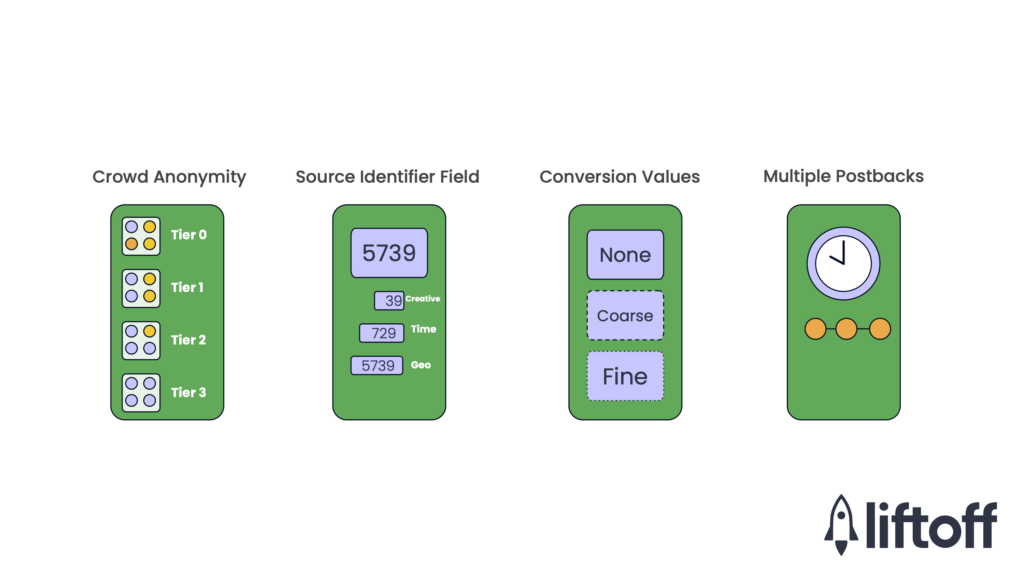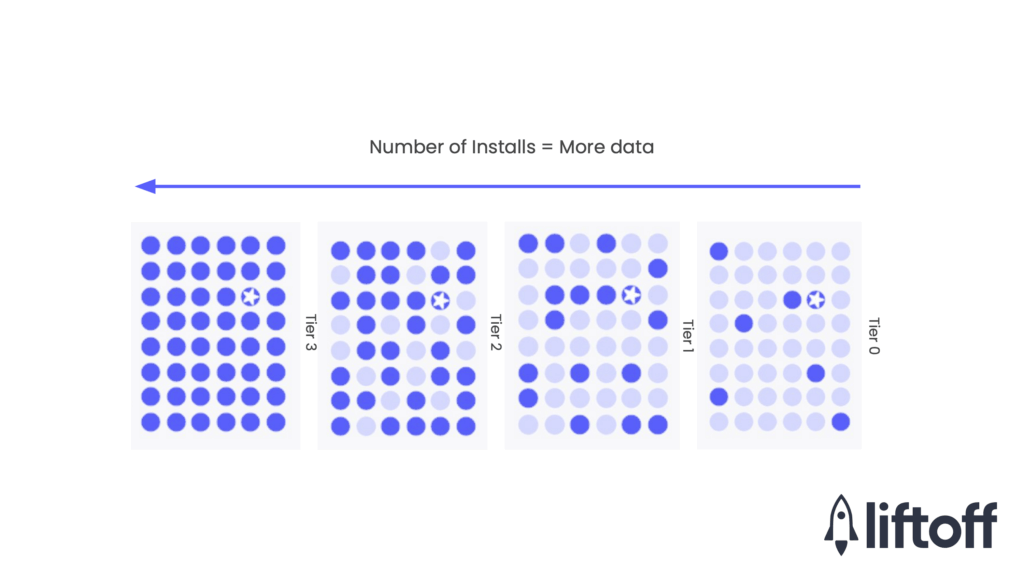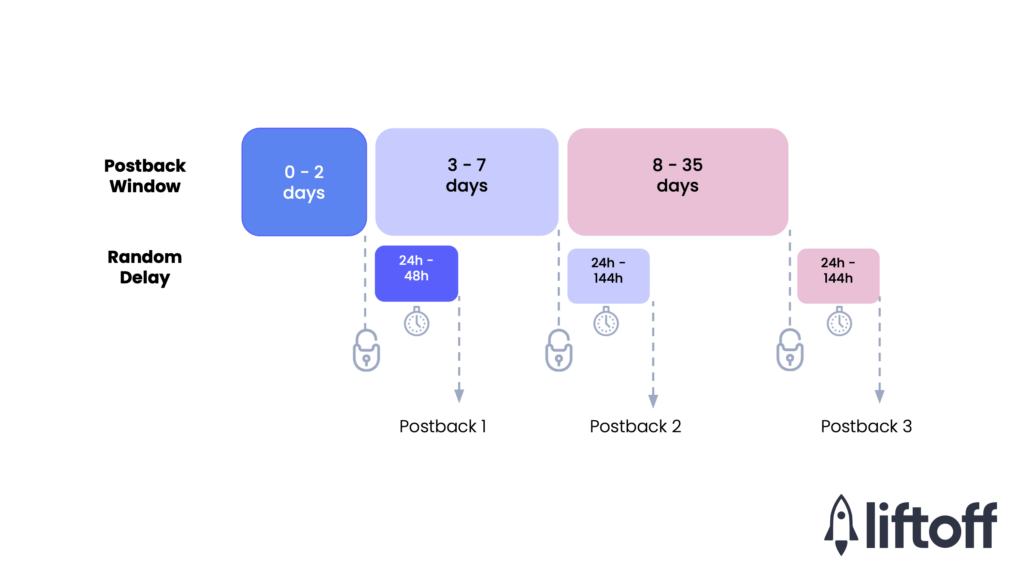
What Is SKAdNetwork and How Does It Impact Mobile Marketing?
Updated: July 9, 2024
Published: July 13, 2021
SKAdNetwork, also known as StoreKit Ad Network or, more commonly, SKAN, is Apple’s privacy-focused framework for campaign measurement. Apple designed SKAN to replace mobile measurement partner (MMP) attribution metrics on iOS and gives users a choice to maintain anonymity by removing the ability to track user activity across games and apps.
It does this by facilitating interaction between three key players in the mobile advertising transaction. It gives app marketers and developers the necessary attribution and performance data, but in a less granular fashion, to protect user privacy.
These key players are:
- The ad network signing and delivering the ad;
- The publishing app responsible for the ad inventory;
- The advertised app.
Each player listed above has a particular role in the transaction of mobile ads on iOS. Ad networks must register and provide their ID to developers, provide signed ads, receive install validation, and verify the postbacks. The publishing app has to integrate the network ID and display ads the network provides. In contrast, the advertised app has to provide app install validation and, optionally, update a conversion value.
SKAN adoption hinges on all three parties adopting a SKAN version. This means whenever a new SKAN version is released, publishing apps need to support it in their apps, and mobile MMPs need to support it in their SDKs. Depending on the SKAN version, ad networks will likely need to update their tech to take advantage of any new features offered by the latest framework. This means whenever a new version of the SKAN framework launches, it can only be fully utilized when all three parties cooperate at scale.
Like any major privacy framework, Apple’s SKAN has undergone various updates over the years. Each update introduces new features and measurement options that impact ad networks, app developers, and marketers. The latest version is SKAN 4.0, which debuted in October 2022 with iOS 16.1.
Apple recently introduced AdAttributionKit at WWDC 2024, a new attribution framework that will coexist alongside SKAN when it lands with iOS 17.4. Keep it locked to the Liftoff blog for a “What Is AdAtttributionKit?” post in the coming weeks.
What is SKAdNetwork 4 (SKAN 4.0)?
SKAdNetwork 4 (SKAN 4.0) significantly changed how post-install attribution works, providing advertisers with more in-depth data while preserving user privacy. If you’re wondering what the biggest changes of SKAN 4.0 are, they involve:

Source identifier field
Before the introduction of SKAN 4.0, advertisers could only identify campaigns with a campaign ID ranging from 0 to 99. The source ID in SKAN 4.0 is a four-digit identification number, ultimately providing advertisers with more information on campaign performance due to the wider analysis available through these digits.
Ultimately, SKAN 4.0 means a minimum of two digits will always be returned to help marketers encode specific campaign IDs. In contrast, additional digits can be used to encode a new dimension of data. For example, the third digit (0 to 9) could be used to encode “creative format” or “creative groups,” while a fourth digit (0 to 9) could be used to encode “supply category.” The ad network will determine how these values are used based on what signal is best for their ML-powered campaign decisioning. The value of these extra signal dimensions will depend greatly on how often the ad network receives them due to crowd anonymity. The more money an advertiser spends, the more data Apple returns for optimization via the greater crowd anonymity tier.
Speaking of crowd anonymity…
Crowd anonymity
Apple’s privacy thresholds got a big change with a four-tiered approach. This approach is part of Apple’s growing focus on protecting the privacy of its users while giving ad networks and advertisers enough information to monitor their campaigns effectively. In this case, crowd anonymity (tiered 1, 2, or 3) is determined by the number of installs on your ad campaign, ultimately impacting the level of data granularity you get from SKAdNetwork.
- Low (tier 1) returns the last two digits of the source ID
- Medium (tier 2) returns three digits of the source ID
- High (tier 3) returns all four digits of the source ID

Coarse-grained conversion values
Another addition to SKAN 4.0 is a new type of conversion value: coarse-grained conversion values. This new conversion value splits user engagement into one of three levels—low, medium, or high—enabling ad networks to understand better how users with limited tracking data interact with their advertisers’ apps.
Multiple postbacks
The arrival of SKAN 4.0 means advertisers can now receive up to three postbacks rather than just the one postback that was available in SKAN 3.0. These postbacks are based on three activity windows (0-2 days, 3-7 days, and 8-35 days), providing advertisers with deeper insight into how users engage with their app.
These changes introduced in SKAN 4.0 provide app marketers and developers with more options for measuring and optimizing their ad campaigns. However, the Liftoff 2024 App Marketer Survey found that over a third of app marketers are unfamiliar with SKAN 4.0 and its associated benefits.

Web-to-app attribution support
With SKAN 4.0, Apple has finally added support for web-to-app attribution for Safari, the most popular browser on iPhones, used by over 90% of iPhone users. This means more acquisition channels are being covered, allowing marketers to gain deeper insights into campaign performance across various channels and platforms.
Why is SKAdNetwork 4 (SKAN 4.0) important?
SKAdNetwork launched in 2018 to provide more privacy for iOS users while still allowing advertisers to run ad campaigns and obtain performance data (attribution) for them. This has resulted in a more privacy-friendly alternative for campaign measurement.
That said, it’s only since the launch of iOS 14 that advertisers started paying attention to SKAdNetwork. Before this, advertisers were happy sticking with the established systems of campaign attribution, but the arrival of iOS 14 and the default enabling of Limit Ad Tracking (LAD) that came with it through Apple’s App Tracking Transparency (ATT) policy pushed advertisers to start embracing SKAdNetwork and understand its conversion values.
What are SKAdNetwork conversion values?
A conversion value is a specific number between 0 and 63 representing an action or a series of actions a user has taken in an app. This conversion value helps ad networks and app owners gain additional insight into users and more accurately measure and predict the value of their campaigns.
So, where does this number come from? When a user clicks an ad and installs an app, a 24-hour postback timer starts. Each time the user completes an in-app action with a conversion value higher than the last one, the timer resets—that’s why the install is automatically valued at 0.
When the timer finally reaches zero, a postback with the install and the highest-valued action completed by the user is sent to the ad network. It’s also important to note, “The postback may include a conversion value and the source app’s ID if Apple determines that providing the values meets Apple’s privacy threshold.” Apple does not disclose what that threshold is.
SKAN 4.0 splits conversion values into two different types: coarse-grained conversion values and fine-grained conversion values.
- Fine-grained conversion values are the 0–63 values we’ve described above.
- Coarse-grained conversion values are determined as ‘low,’ ‘medium,’ or ‘high’ according to the action(s) a user has undertaken in an app.
Fine-grained conversion values are only obtainable if the crowd anonymity threshold is met. Second and third postbacks will never be fine-grained.
However, just because there are now two different types of conversion value doesn’t mean advertisers can receive both in each postback. Advertisers will only ever get either the coarse-grained conversion value or the fine-grained conversion value, which is determined by Apple’s crowd anonymity.
The drawbacks of SKAdNetwork
When it comes to protecting users’ privacy, SKAdNetwork is a home run, but that doesn’t mean it’s not without its problems. While SKAN 4.0 is a significant improvement over previous versions, its results are still aggregated, meaning they lack the kind of granularity most useful for personalizing campaigns. The second and third postbacks are never fine-grained, as mentioned previously, so these extra postbacks, while welcomed, offer less data and value to the advertiser and ad networks that will leverage them than the first postback.
The lack of granular event-level data (all data is aggregated) makes it challenging to tweak campaigns in real-time and could allow less-than-scrupulous ad networks to defraud advertisers.
How Liftoff can help
In an era dominated by rapidly advancing privacy changes such as ATT, SKAN, and Google’s upcoming shift from Android Advertising ID (AAID)/Google Advertising ID (GAID) to its Privacy Sandbox, it’s never been more important for mobile marketers to be aware of these changes and how to respond to them.
At Liftoff, we’re passionate about helping you navigate these changes and optimize your campaigns.
Contact us to learn more about how Liftoff can help you achieve your mobile marketing goals.